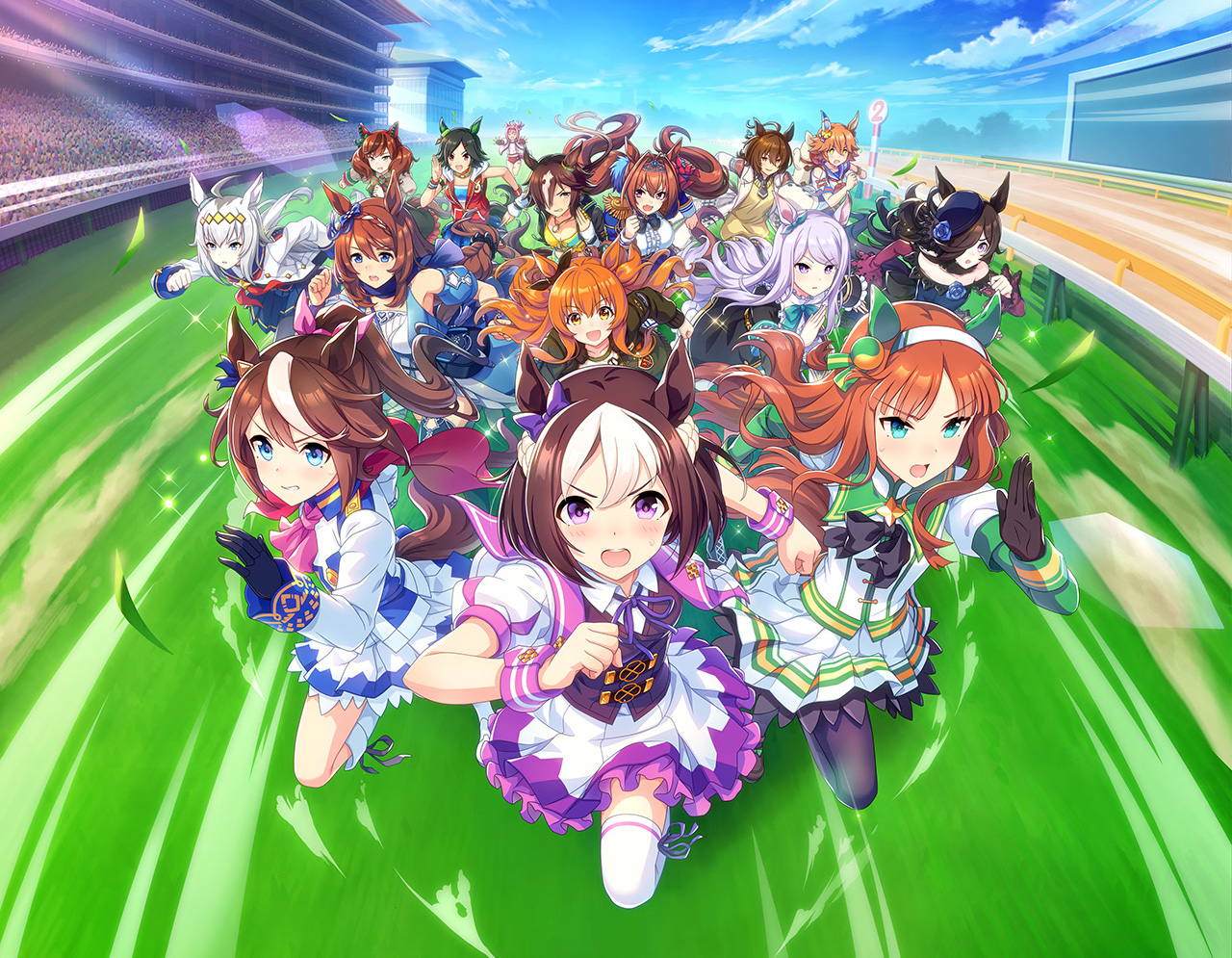Earlier this spring at the end of February, Cygames‘ Umamusume Pretty Derby (ウマ娘プリティーダービー) took the Japanese iOS gaming market by storm, busting its way to the number one position on the top-grossing ranks within just two days of its launch. It’s been dominating the rankings ever since, only occasionally dipping down to visit the second rank for a day or two.
This kind of success is by no means a small feat: the top position is clear with almost double of the 30-day revenue of the next best, a long-time top contender Monster Strike.
Usually, the top-grossing rankings in the Japanese market are rather set in stone. The top ten is mostly occupied by older games that have a strong, well-established player base (such as Monster Strike). The latest newcomer being able to stay anywhere close to the top was miHoYo’s Genshin Impact. As weeks went by after Umamusume’s launch, it became clear that this was no mere shooting star.
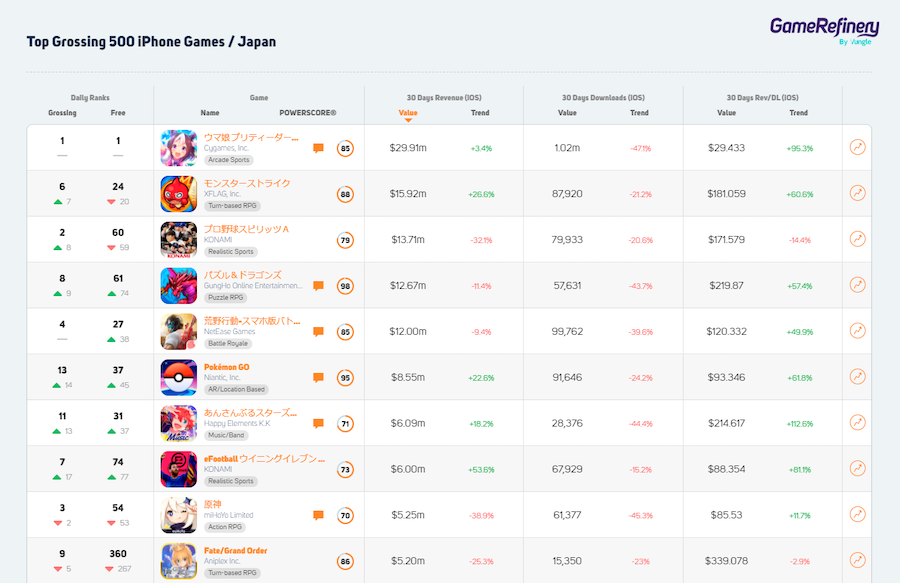
The theme of the game certainly raised some eyebrows when it appeared on our radar. The idea of Umamusume Pretty Derby is training derby horse girls, or in other words, legendary racehorses that have been reborn into mostly human shape. Wait, mostly human? Yes, they have horse ears and a tail. They also run as fast as horses, not to mention dance and sing like pop stars if they win a race. With a cocktail like this, one can’t help but wonder: what’s the secret to this phenomenal success?
Editor’s note: Umamusume Pretty Derby was also featured in our newest Mobile Game Insider episode. Take a quick look to find out why we think the game has become so popular.
Seeds of success
Before its launch, Umamusume Pretty Derby already had an established fanbase. The earliest roots of the franchise go back to 2016, when the first manga comics were published. The mobile game was set to be launched in late 2018, the same year that the first season of the anime series had aired. The launch was delayed three times before the game’s release in March 2021, which in turn was right before the airing of the second season of the anime series in Japan. All in all, the franchise includes four manga series, two animation series, and now the game (playable on mobile and PC).
Among the fans, the game seems to have been highly anticipated, with the delays in the launch heightening expectations even further. On top of that, the eventual launch was well coordinated with the airing of the second season of the anime, both drumming up hype for each other. For fans, the game offers a way of training and cheering on their favorite characters from the series.
Core training loop
For the core gameplay of Umamusume Pretty Derby, players select one Umamusume at a time to focus on. For the girl selected, players must then choose six support cards and six support characters. The better the synergy between the characters, the better the results of training.
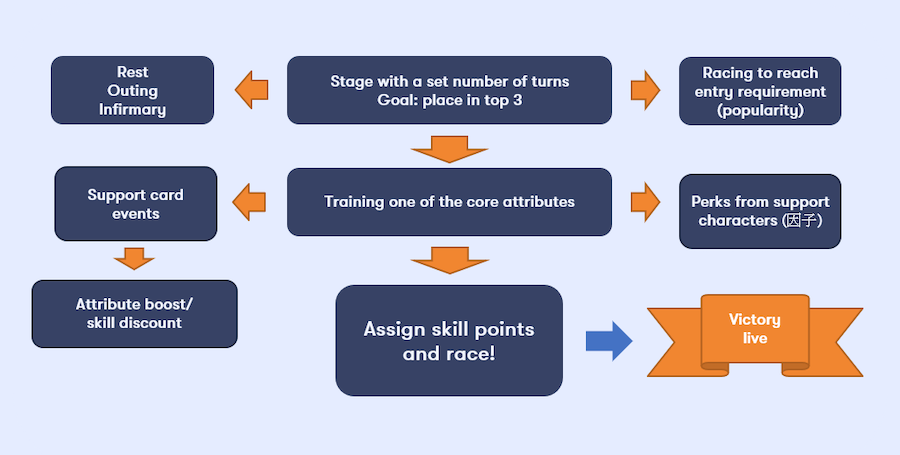
Once the team has been set, the training loop starts: the chosen Umamusume is trained for 3 years in the Tracen Academy (training academy for Umamusume). The three years include several stages, each culminating in a race with a placement requirement or a popularity goal (e.g., finish in the top three or reach 10000 fans). The stages span a various number of turns, with the most in a single loop being 72 turns in total. Each turn, players must either train one of the core attributes of the Umamusume, take them on an outing, have them rest, go to the infirmary to heal, or participate in a race. Training and races take up endurance (shown in a gauge on top), and outings and rest recover it. The success of training depends on the Umamusume’s mood and remaining stamina. During training, Umamusume acquire skill points that can be assigned in a list of skills to upgrade, and the skills can then manifest during races. The skills and races are different based on the strengths and favored tactics of the Umamusume, but more on that later.
The training loop includes lots of different kinds of events, some of which are part of general storytelling scenarios and some that are triggered by the supporting cards selected. The support card events can have various boosting effects on attributes, and they can also lower the cost of skills. The main Umamusume can also inherit perks from the supporting characters (characters that have already completed the loop) during training. Passing on the perks is an important part of creating strong characters, and the perks get better through training. The loop finishes when all stages have been cleared, or the player fails to reach a goal for the given stage, after which the Umamusume is “done”: the character enters your roster with the stats achieved during training, and it can now be assigned as a supporting character or as a member of a PvP team.
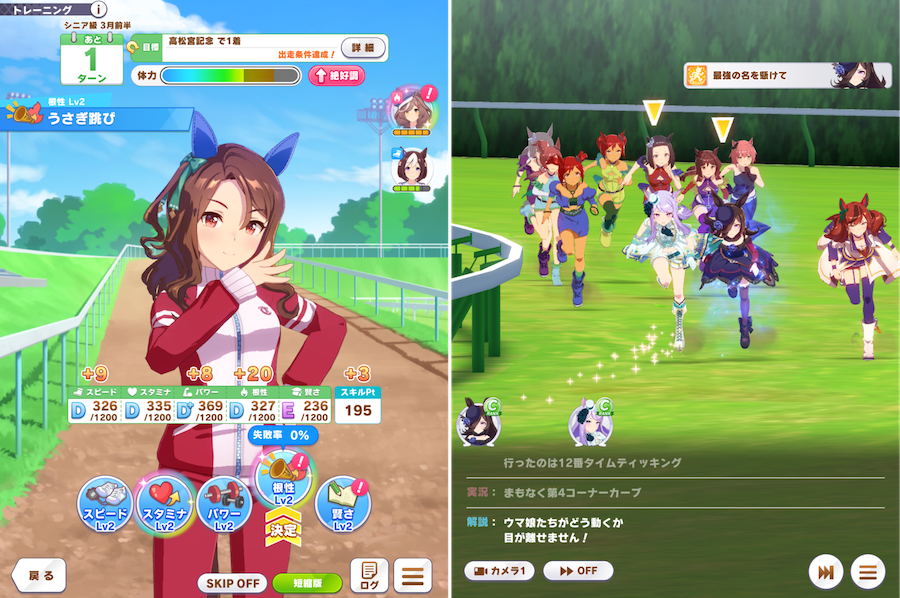
Basically, the idea is to repeat the loop several times with the goal of improving the results through support characters each time. For the best results, players should ideally take turns focusing on a team with good synergies so that they support each other better during the loop. Naturally, the end result is having several versions of the same Umamusume in your roster. Before starting the loop, the base versions of the Umamusume and support cards can be upgraded to boost the starting attributes and event effects.
Racing
Race results are calculated by an AI, but players can watch how it goes in cinematic race scenes. The girls are first shown off in paddocks similarly to real races: the favorites of the audience are also ranked. At this point, it’s also possible to choose a tactic for the race: escaping to create a gap, running in the lead group, hanging further back and breaking away later, or staying last until the final spurt. The main Umamusume chosen for the training loop will be performing on her own during the race, and here is where the distribution of skill points and attribute training becomes important. If the placement requirement for the race isn’t filled, players have the option of using an alarm clock-boost item to start the race over. One alarm clock is provided for free daily, and the function can be used a maximum of three times in a training loop before being forced to finish.
Once the race is finished, there’s often an option to enter a Victory Live, which is a musical pop/rock performance by the participants of the race (also a big part of the races in the original anime series). There are several different milestone races that gift players with new songs and performances: all the unlocked ones can be enjoyed (and customized) again in the Live Theater function.
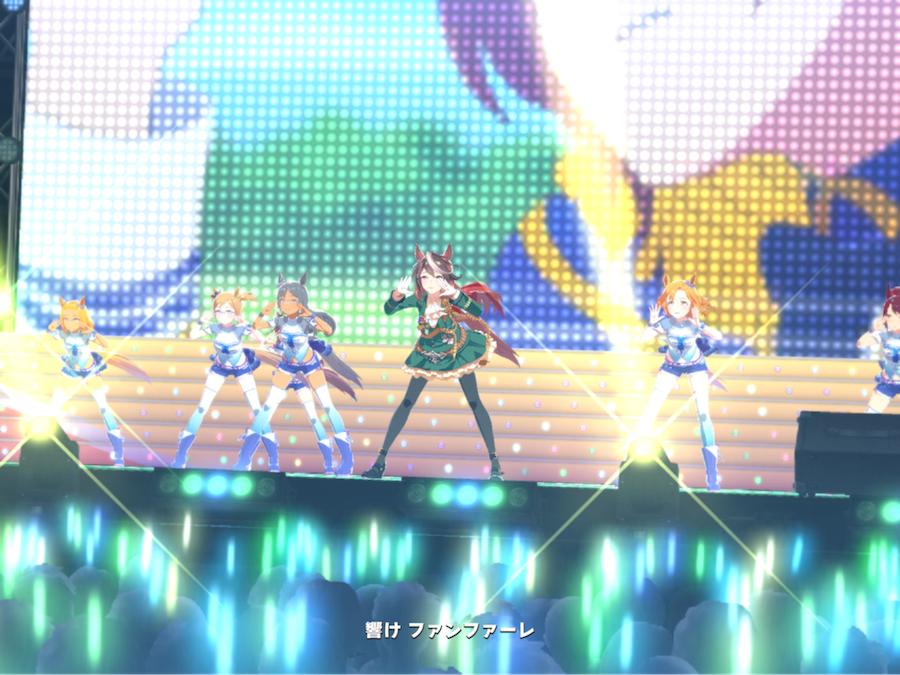
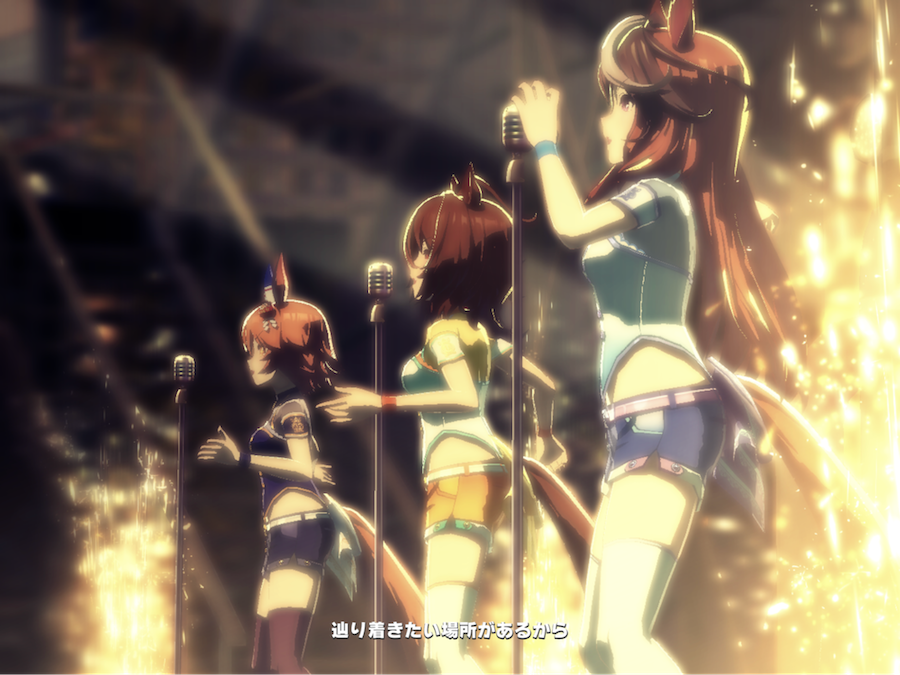
Story mode, PvE challenges, and PvP tournaments
Once characters finish their training, they can be used in the story mode, the PvE challenges, and PvP races. The story mode follows the player’s journey as a trainer in the Tracen Academy. The chapters are mostly storytelling through dialogue with a few races that need to be won scattered in pivotal moments of the story.
It should be noted that the story scenes set Umamusume Pretty Derby apart from its competitors with scene depth, camera angles, and plentiful, varied movements. The characters also move in and out of the scene and interact with objects, and the camera moves with the scene: in a way, the feel of the story almost resembles watching a show.
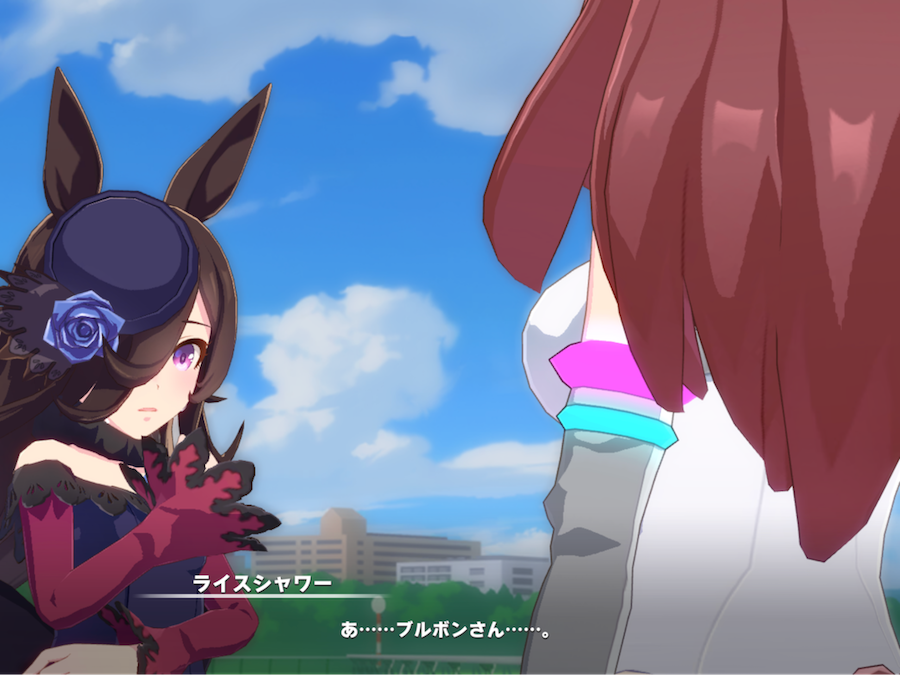
Aside from the story, the finished Umamusume can also join your team in an asynchronous PvP league and test their strength in the PvE challenges. The PvP team has five slots to fill for different race types. Each character has its strong points that should be considered when creating a well-rounded team: some are better in long-range, some in short-range, some are better in certain race tactics that work better in specific ranges, and so on. As the game progresses, up to three sets of characters can be assigned. Matchmaking is filtered based on the team level, and the races take place in succession for each race type with the opponent’s corresponding representatives. Players can skip to the results or watch the races unfold. As for the PvE, two kinds of daily race challenges are offered, and Legend Races open up frequently with various legendary Umamusume to challenge.
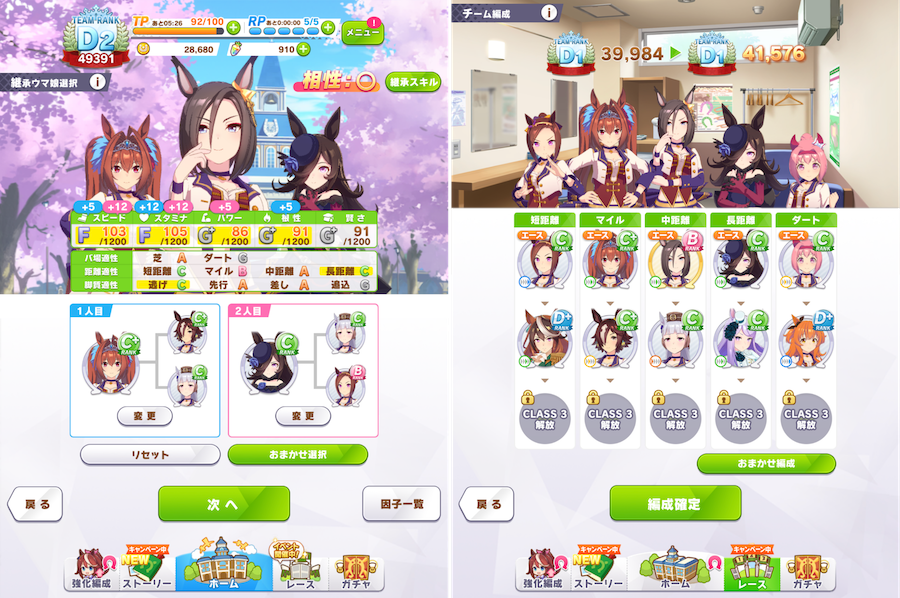
Monetization
So, how does the game make money? The answer boils down to the gachas, where players can purchase the base versions of the Umamusume and support cards. That said, the training system inspires purchases in a clever way: completing the whole three-year training loop (or even playing it as far as possible) takes a very, very long time, so it makes sense to have the team with the synergies you want before you start. To put that into perspective, completing a few longer stages of the loop (about 30 turns with all event videos) can easily take up an hour, and most loops have 7-9 stages. Most of the events and dialogue become familiar when you go through the loop several times with the same characters and cards, so it’s possible to skip some or all of them. Still, even if the events are skipped/fast-forwarded, the loop tends to swallow up a lot of time, and since it needs to be completed for several characters to be able to use them elsewhere in the game, it’s likely that most players don’t want to waste time starting it and then failing because of an unsuitable team. Starting the loop also takes up energy (separate energy for PvP) which can be replenished with premium currency (carrot jewels). Gameplay is rewarded with premium currency, but buying it is encouraged with gacha offers only obtainable with bought currency (e.g., daily pull with a low price). Additionally, some like the Start Dash gachas can only be pulled with bought currency. The gacha system also supports character development before entering training: duplicates turn into upgrade materials or can be used for upgrades as is.
All in all, the monetization model is simple but effective.
Summary
Even if the success of the franchise and the pre-existing fanbase are likely to have given the game a good push from the start, the game does have its own two feet to stand on when it comes to its success. Impressive 3D visuals in storytelling combined with the colorful visuals true to original anime make the game a feast for the eyes. The gameplay provides excitement through races and locks players in with an engaging character development system that requires commitment. The monetization system relies heavily on character collection, but the mechanics of the core gameplay have been built to support it well. With this recipe, Umamusume Pretty Derby has managed to secure its spot as the new reigning queen of the Japanese mobile gaming market.
In the future, Umamusume Pretty Derby is likely to keep dominating the arcade sports field and continue giving the top-grossing games a run for their money, quite literally. Feature-wise, we expect to see Cygames beef up the skin collection and character decoration function. It’s probable that special gacha mechanics and event-bound versions of the Umamusume will make an appearance in the future. Considering the theme of the game, we also look forward to seeing how collaboration events (which are the go-to revenue-boosting tactic on the JP market) will be implemented.
The full feature set and updates for Umamusume Pretty Derby and other interesting titles from the Japanese market can be further explored with the Japanese market data package on the GameRefinery service!
If you enjoyed reading this post, here are a few more you should definitely check out:

